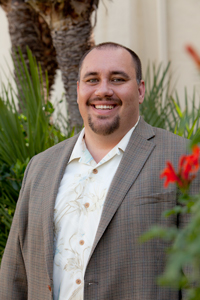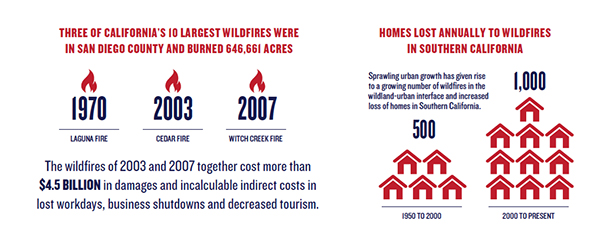Science
Wildfire seasons may be longer and more extreme, with warming temperatures, drier soils and vegetation and less frequent rains.
The science and why it matters:
- A hotter and drier climate, along with less frequent rainfall, will increase the frequency and severity of droughts and could alter fire fuel conditions in ways that promote larger, more catastrophic fires.
- The fire season may be longer and less predictable, putting more homes, firefighters and natural lands at risk for longer stretches of time.
- If current land use and development patterns continue, the economic cost of wildfires will continue to increase; these costs include a need for increased firefighting resources and the cost of rebuilding affected homes, businesses and infrastructure.
- We may also suffer from a higher number of poor air quality days as a result of more frequent and larger fire events.
A word from the scientists
"It’s too easy to forget that wildfires have already extracted a huge cost in our region in the last decade. We can reduce future costs and safety risks by keeping new housing within existing urban areas, reducing fire-loving, non-native plants and devoting adequate firefighting resources to quickly control wildfires."
Matt Rahn, PhD
Director, Wildfire Research Center, San Diego State University, and Associate Professor, University of California Merced


Wildfires in Southern California
Three of California's 10 largest wildfires were in San Diego County and burned 646,661 acres.1
The wildfires of 2007 and 2003 together cost more than $4.5 billion in damages and incalculable indirect costs in lost workdays, business shutdowns and decreased tourism.2,3
Sprawling urban growth has given rise to a growing number of wildfires in the wildland-urban Interface and increased loss of homes in Southern California.
Homes lost annually to wildfires in Southern California:4
- 1950 to 2000: 500
- 2000 to present: 1000
1. CalFire. 2013. 20 Largest California Wildland Fires Factsheet. Retrieved from http://www.fire.ca.gov/communications/downloads/fact_sheets/20LACRES.pdf
2. San Diego Institute for Policy Research. 2007. Economic Costs of the October 2007 Fires To San Diego County Exceed $2 Billion. Retrieved from http://www.nusinstitute.org/Research/Briefs/Economic-Impact-Fires-07.html
3. Rahn, M. 2009. Fire Impact Analysis: Wildfire Impact Analysis. Retrieved from http://universe.sdsu.edu/sdsu_newscenter/images/rahn2009fireanalysis.pdf
4. Dr. Jon Keeley speaking in Living with Fire: The USGS Southern California Wildfire Risk Project video. Retrieved from http://gallery.usgs.gov/videos/620#.UzypjfldXZ4
